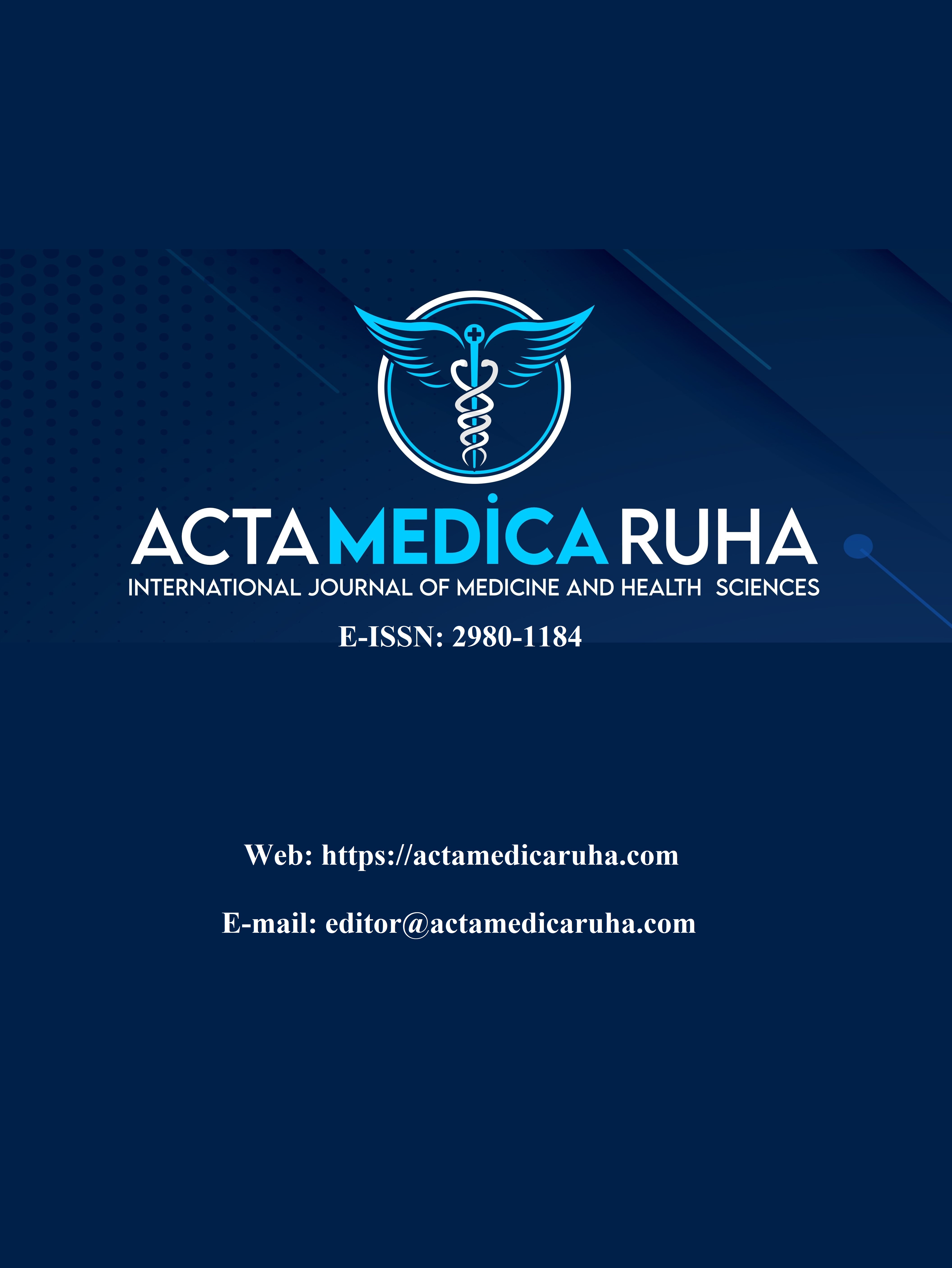Kronik İnmeli Bireylerde Yürütücü Fonksiyonlar ve Dikkat Becerileri ile Üst Ekstremite Motor Fonksiyonları Arasındaki İlişki
Araştırma Makalesi
DOI:
https://doi.org/10.5281/zenodo.14493958Anahtar Kelimeler:
Kronik İnme, Üst Ekstremite, Kognitif Fonksiyon, MoCAÖzet
Giriş: İnme sonrası en yaygın karşılaşılan sorunlardan biri, üst ekstremitelerdeki motor fonksiyon kaybıdır. Uzun vadede kısıtlılığı en aza indirmek ve yaşam kalitesini daha iyi hale getirebilmek için üst ekstremite motor fonksiyonlardaki iyileşme çok önemlidir.
Amaç: Bu çalışma, kognitif olarak normal kabul edilen kronik inmeli bireylerde, yürütücü fonksiyonlar ve dikkat becerileri ile üst ekstremite motor fonksiyonları arasındaki ilişkiyi incelemeyi amaçlamaktadır.
Yöntem: Çalışmaya, Erenköy Fizik Tedavi ve Rehabilitasyon Hastanesinde tedavi gören, kronik inmeli 58 kişi dahil edildi. Bireylerin kognitif, yürütücü ve dikkat becerilerini değerlendirmek için Montreal Bilişsel Değerlendirme Ölçeği (MoCA), Stroop Testi TBAG Formu ve Sayı Menzil Testi kullanıldı. Üst ekstremite fonksiyonlarının eğerlendirmek için Fugl Meyer Üst Ekstremite Değerlendirme Ölçeği (FMA-ÜE) ve Kutu ve Blok Testi (KBT) kullanıldı.
Bulgular: Çalışmanın bulgularına baktığımızda, bireylerin üst ekstremite motor fonksiyonları MoCA ve Sayı Menzili Testi skorları ile pozitif yönde; Stroop Testi bileşenleri ile ise negatif yönde anlamlı (p<0,05) bir korelasyona sahipti. Kognitif fonksiyonların, MoCA ile KBT arasındaki regresyon analizine göre %40, MoCA ile FMA-ÜE arasındaki regresyon analizine göre ise %17 üst ekstremite motor fonksiyonları üzerinde etkili olmaktadır.
Sonuç: Çalışmanın sonuçları kognitif olarak normal kabul edilen kronik inmeli hastalarda yürütücü fonksiyonlar ve dikkat becerileri ile üst ekstremite motor fonksiyonları arasındaki ilişkiyi ortaya koymaktadır. Terapistlerin rehabilitasyon sürecinde, protokollerini oluştururken yürütücü fonksiyon ve dikkat bileşeninin göz önünde bulundurması, kişiselleştirilmiş ve başarılı programlar oluşturmalarına yardımcı olacaktır.
Referanslar
Sacco RL, Kasner SE, Broderick JP, et al. An updated definition of stroke for the 21st century: a statement for healthcare professionals from the American Heart Association/American Stroke Association [published correction appears in Stroke. 2019;50(8):e239. doi:10.1161/STR.0000000000000205]. Stroke. 2013;44(7):2064-2089. doi:10.1161/STR.0b013e318296aeca
Miller EL, Murray L, Richards L, et al. American Heart Association Council on Cardiovascular Nursing and the Stroke Council. Comprehensive overview of nursing and interdisciplinary rehabilitation care of the stroke patient: a scientific statement from the American Heart Association. Stroke. 2010;41(10):2402-48. doi:10.1161/STR.0b013e3181e7512b
Kalra L, Langhorne P. Facilitating recovery: evidence for organized stroke care. J Rehabil Med. 2007;39(2):97-102. doi:10.2340/16501977-0043. PMID: 17351689.
Nakayama H, Jørgensen HS, Raaschou HO, Olsen TS. Recovery of upper extremity function in stroke patients: the Copenhagen Stroke Study. Arch Phys Med Rehabil. 1994;75(4):394-8. doi: 10.1016/0003-9993(94)90161-9
Wolf SL, Winstein CJ, Miller JP, et al. EXCITE Investigators. Effect of constraint-induced movement therapy on upper extremity function 3 to 9 months after stroke: the EXCITE randomized clinical trial. JAMA. 2006;296(17):2095-104. doi:10.1001/jama.296.17.2095
Kleim JA, Jones TA. Principles of experience-dependent neural plasticity: implications for rehabilitation after brain damage. J Speech Lang Hear Res. 2008;51(1):S225-39. doi:10.1044/1092-4388(2008/018)
Reed, K.L. Cognitive-Perceptual Disorders. R.R. Zukas (Ed.). Quick Reference to Occupational Therapy Second Edition. 2001. (s.689-758). Texas: PRO- ED, Inc.
Damsbo AG, Kraglund KL, Buttenschøn HN, Johnsen SP, Andersen G, Mortensen JK. Predictors for wellbeing and characteristics of mental health after stroke. J Affect Disord. 2020;264:358-364. doi:10.1016/j.jad.2019.12.032
Hoffmann T, Bennett S, Koh CL, McKenna KT. Occupational therapy for cognitive impairment in stroke patients. Cochrane Database Syst Rev. 2010;2010(9):CD006430. doi:10.1002/14651858.CD006430.pub2
Cumming TB, Marshall RS, Lazar RM. Stroke, cognitive deficits, and rehabilitation: still an incomplete picture. Int J Stroke. 2013;8(1):38-45. doi:10.1111/j.1747-4949.2012.00972.x
Barker-Collo S, Feigin V. The impact of neuropsychological deficits on functional stroke outcomes. Neuropsychol Rev. 2006;16(2):53-64. doi:10.1007/s11065-006-9007-5
Boe EW, Pedersen AD, Pedersen AR, Nielsen JF, Blicher JU. Cognitive status does not predict motor gain from post stroke constraint-induced movement therapy. NeuroRehabilitation. 2014;34(1):201-7. doi:10.3233/NRE-131011
Aslan H, Baskan E. investıgation of the relationshıp between cognitive level and upper extremity functions in patients with chronic stroke. Karya Journal of Health Science. 2024;5(1):22-27. doi:10.52831/kjhs.1407836
Skidmore ER, Becker JT, Whyte EM, et al. Cognitive impairments and depressive symptoms did not impede upper limb recovery in a clinical repetitive task practice program after stroke: a pilot study. Am J Phys Med Rehabil. 2012;91(4):327-31; quiz 332-6. doi:10.1097/PHM.0b013e318246607b
Dancause N, Ptito A, Levin MF. Error correction strategies for motor behavior after unilateral brain damage: short-term motor learning processes. Neuropsychologia. 2002;40(8):1313-1323. doi:10.1016/s0028-3932(01)00218-4
Cirstea CM, Ptito A, Levin MF. Feedback and cognition in arm motor skill reacquisition after stroke. Stroke. 2006;37(5):1237-1242. doi:10.1161/01.STR.0000217417.89347.63
Robertson IH, Ridgeway V, Greenfield E, Parr A. Motor recovery after stroke depends on intact sustained attention: a 2-year follow-up study. Neuropsychology. 1997;11(2):290-5. doi: 10.1037//0894-4105.11.2.290
Hyndman D, Pickering RM, Ashburn A. The influence of attention deficits on functional recovery post stroke during the first 12 months after discharge from hospital. J Neurol Neurosurg Psychiatry. 2008;79(6):656-63. doi:10.1136/jnnp.2007.125609
Mullick AA, Subramanian SK, Levin MF. Emerging evidence of the association between cognitive deficits and arm motor recovery after stroke: A meta-analysis. Restor Neurol Neurosci. 2015;33(3):389-403. doi:10.3233/RNN-150510
Saberi A, Hosseininezhad M, Rezaei S, Salehil S, Neshin SAS, Hasanzadeh B. The effect of cognitive impairment on functional outcome after stroke: A cross sectional study. Activitas Nervosa Superior Rediviva. 2020;62(1):41-46.
Claesson L, Lindén T, Skoog I, Blomstrand C. Cognitive impairment after stroke - impact on activities of daily living and costs of care for elderly people. The Göteborg 70+ Stroke Study. Cerebrovasc Dis. 2005;19(2):102-109. doi:10.1159/000082787
Paker N, Buğdaycı D, Tekdöş D, Kaya B, Dere C. Impact of cognitive impairment on functional outcome in stroke. Stroke Res Treat. 2010;2010:652612. doi:10.4061/2010/652612
Fugl-Meyer AR, Jääskö L, Leyman I, Olsson S, Steglind S. The post-stroke hemiplegic patient. 1. a method for evaluation of physical performance. Scand J Rehabil Med. 1975;7(1):13-31.
Desrosiers J, Bravo G, Hébert R, Dutil E, Mercier L. Validation of the Box and Block Test as a measure of dexterity of elderly people: reliability, validity, and norms studies. Arch Phys Med Rehabil. 1994;75(7):751-755.
Ahmed S, Mayo NE, Higgins J, Salbach NM, Finch L, Wood-Dauphinée SL. The Stroke Rehabilitation Assessment of Movement (STREAM): a comparison with other measures used to evaluate effects of stroke and rehabilitation. Phys Ther. 2003;83(7):617-630.
Nasreddine ZS, Phillips NA, Bédirian V, et al. The Montreal Cognitive Assessment, MoCA: a brief screening tool for mild cognitive impairment. J Am Geriatr Soc. 2005;53(4):695-699. doi:10.1111/j.1532-5415.2005.53221.x. Erratum in: J Am Geriatr Soc. 2019;67(9):1991. doi:10.1111/jgs.15925. PMID: 15817019
Selekler K, Cangöz B, Sait U. Power of discrimination of Montreal Cognitive Assessment (MOCA) Scale in Turkish patients with mild cognitive impairement and Alzheimer's disease. Turkish Journal of Geriatrics. 2010;13(3).
Stroop JR. Studies of interference in serial verbal reactions. Journal of experimental psychology. 1935;18(6):643.
Wechsler D, Stone CP. Wechsler Memory Scale Manual. The Psychological Corporation, New York, 1945.
Roh HL, Kım CW. Cognition and upper-extremity function influence on performance of activities of daily living in patients with chronic stroke. Journal of the Korean Society of Physical Medicine. 2019;14(4):115-123.
Richards CL, Malouin F, Nadeau S. Stroke rehabilitation: clinical picture, assessment, and therapeutic challenge. Prog Brain Res. 2015;218:253-280. doi:10.1016/bs.pbr.2015.01.003
İnanç Y, Arlıer Z, Giray S, İnanç Y. Demographic characteristics of patients who recovered or worsened after intravenous thrombolysis within 24 hours of acute ischemic stroke. Neurol Sci Neurophysiol. 2018;35:29-33.
Langan J, van Donkelaar P. The influence of hand dominance on the response to a constraint-induced therapy program following stroke. Neurorehabil Neural Repair. 2008;22(3):298-304. doi:10.1177/1545968307307123
Kluding PM, Tseng BY, Billinger SA. Exercise and executive function in individuals with chronic stroke: a pilot study. J Neurol Phys Ther. 2011;35(1):11-17. doi:10.1097/NPT.0b013e318208ee6c
Lin DJ, Erler KS, Snider SB, et al. Cognitive Demands Influence Upper Extremity Motor Performance During Recovery From Acute Stroke. Neurology. 2021;96(21):e2576-e2586. doi:10.1212/WNL.0000000000011992
Whitney KA, Mossbarger B, Herman SM, Ibarra SL. Is the montreal cognitive assessment superior to the mini-mental state examination in detecting subtle cognitive impairment among middle-aged outpatient U.S. Military veterans? Arch Clin Neuropsychol. 2012;27(7):742-748. doi:10.1093/arclin/acs060
Sunderland A, Bowers MP, Sluman SM, Wilcock DJ, Ardron ME. Impaired dexterity of the ipsilateral hand after stroke and the relationship to cognitive deficit. Stroke. 1999;30(5):949-955. doi:10.1161/01.str.30.5.949
Ashendorf L, Vanderslice-Barr JL, McCaffrey RJ. Motor tests and cognition in healthy older adults. Appl Neuropsychol. 2009;16(3):171-176. doi:10.1080/09084280903098562
Zapata-Figueroa V, Ortiz-Corredor F. Assessment of manual abilities using the box and block test in children with bilateral cerebral palsy. Occup Ther Int. 2022;2022:9980523. doi:10.1155/2022/9980523
Tekin S, Cummings JL. Frontal-subcortical neuronal circuits and clinical neuropsychiatry: an update. J Psychosom Res. 2002;53(2):647-654. doi:10.1016/s0022-3999(02)00428-2
Kauhanen M, Korpelainen JT, Hiltunen P, et al. Poststroke depression correlates with cognitive impairment and neurological deficits. Stroke. 1999;30(9):1875-1880. doi:10.1161/01.str.30.9.1875
Lipskaya-Velikovsky L, Zeilig G, Weingarden H, Rozental-Iluz C, Rand D. Executive functioning and daily living of individuals with chronic stroke: measurement and implications. Int J Rehabil Res. 2018;41(2):122-127. doi:10.1097/MRR.0000000000000272
Levin MF, Subramanian SK, Chilingaryan G, Sveistrup H. Influence of depression and cognitive deficits on use of feedback for upper limb recovery in chronic stroke. Neurorehabil Neural Repair. 2014;28(9):924.
Rodríguez-Aranda C, Mittner M, Vasylenko O. Association Between Executive Functions, Working Memory, and Manual Dexterity in Young and Healthy Older Adults: An Exploratory Study. Percept Mot Skills. 2016;122(1):165-192. doi:10.1177/0031512516628370
Uwa-Agbonikhena IF, Gryb VA, Gerasymchuk VR. Associations between the upper extremity function and cognition in post-stroke patients. Wiad Lek. 2021;74(8):1917-1920.
Leisman G, Moustafa AA and Shafir T. Thinking, Walking, Talking: Integratory Motor and Cognitive Brain Function. Front. Public Health. 2016;4:94. doi:10.3389/fpubh.2016.00094
Connell LA, Tyson SF. Clinical reality of measuring upper-limb ability in neurologic conditions: a systematic review. Arch Phys Med Rehabil. 2012;93(2):221-228. doi:10.1016/j.apmr.2011.09.015
Chen HM, Chen CC, Hsueh IP, Huang SL, Hsieh CL. Test-retest reproducibility and smallest real difference of 5 hand function tests in patients with stroke. Neurorehabil Neural Repair. 2009;23(5):435-440. doi:10.1177/1545968308331146
Wong WW, Fang Y, Chu WCW, Shi L, Tong KY. What Kind of Brain Structural Connectivity Remodeling Can Relate to Residual Motor Function After Stroke? Front Neurol. 2019;10:1111. doi:10.3389/fneur.2019.01111
İndir
Yayınlanmış
Nasıl Atıf Yapılır
Sayı
Bölüm
Lisans
Telif Hakkı (c) 2024 Acta Medica Ruha

Bu çalışma Creative Commons Attribution 4.0 International License ile lisanslanmıştır.









